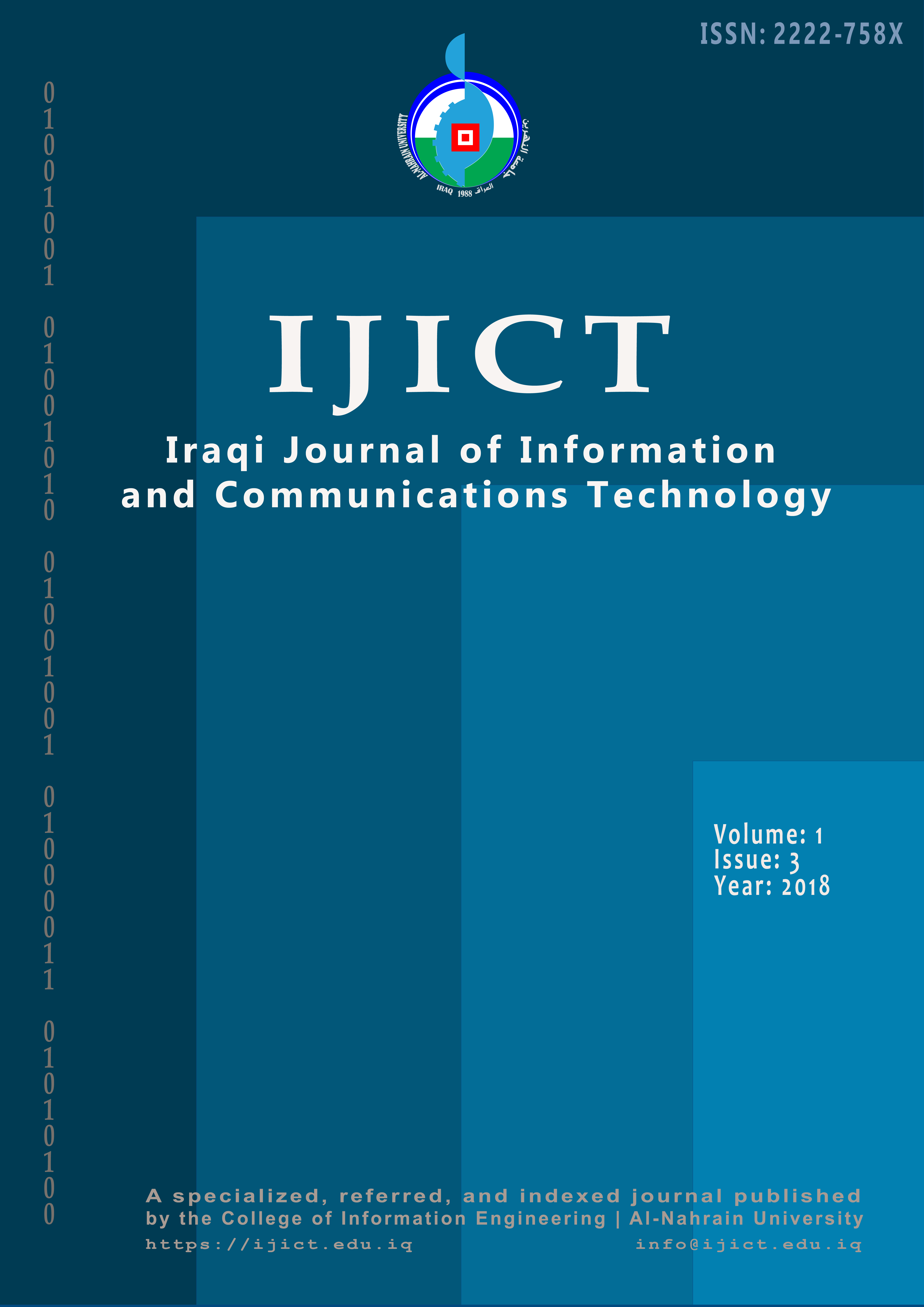Abstract
Finger Texture (FT) is one of the most recent attractive biometric characteristic. It refers to a finger skin area which is restricted between the fingerprint and the palm print (just after including the lower knuckle).Different specifications for the FT can be obtained by employing multiple images spectrum of lights. Individual verification systems are established in this paper by using multiple spectrum FT specifications. The key idea here is that by combining two various spectrum lightings of FTs, high personal recognitions can be attained. Four types of fusion will be listed and explained here: Sensor Level Fusion (SLF), Feature Level Fusion (FLF), Score Level Fusion (ScLF) and Decision Level Fusion (DLF). Each fusion method is employed, examined for different rules and analysed. Then, the best performance procedure is benchmarked to be considered. From the database of Multiple Spectrum CASIA (MSCASIA), FT images have been collected. Two types of spectrum lights have been exploited (the wavelength of 460 nm, which represents a Blue (BLU) light, and the White (WHT) light). Supporting comparisons were performed, including the state-of-the-art. Best recognition performance was recorded for the FLF based concatenation rule by improving the Equal Error Rate (EER) percentages from 5% for the BLU and7% for the WHT to 2%
Keywords
Finger texture
Fusion levels
Multiple spectrum
Verification systems
Abstract
نسيج الإصبع (FT) هو أحد أحدث السمات الحيوية الجذابة. يشير إلى منطقة جلد الإصبع المقيدة بين بصمة الإصبع وبصمة راحة اليد (بعد تضمين المفصل السفلي). يمكن الحصول على مواصفات مختلفة لنسيج الإصبع من خلال استخدام طيف صور متعدد للأضواء. تم إنشاء أنظمة التحقق الفردية في هذه الورقة باستخدام مواصفات نسيج الإصبع متعدد الأطياف. الفكرة الرئيسية هنا هي أنه من خلال الجمع بين إضاءتين مختلفتين من نسيج الإصبع، يمكن تحقيق التعرف الشخصي العالي. سيتم سرد أربعة أنواع من الاندماج وشرحها هنا: دمج مستوى المستشعر (SLF)، دمج مستوى الميزة (FLF)، دمج مستوى النتيجة (ScLF) ودمج مستوى القرار (DLF). يتم استخدام كل طريقة دمج وفحصها لقواعد مختلفة وتحليلها. بعد ذلك، يتم معايرة أفضل إجراء أداء للنظر فيه. من قاعدة بيانات CASIA متعددة الأطياف (MSCASIA)، تم جمع صور نسيج الإصبع. تم استغلال نوعين من أضواء الطيف (طول الموجة 460 نانومتر، والذي يمثل الضوء الأزرق (BLU)، والضوء الأبيض (WHT)). تم إجراء مقارنات داعمة، بما في ذلك أحدث التقنيات. تم تسجيل أفضل أداء للتعرف على قاعدة التجميع القائمة على FLF من خلال تحسين نسب معدل الخطأ المتساوي (EER) من 5% لـ BLU و7% لـ WHT إلى 2%
Keywords
انظمة التحقق
متعدد الاطياف
مستويات الدمج
نقش الإصبع
